
Small.
LED Arrays have been prone to problems.
Area covered.
Price.
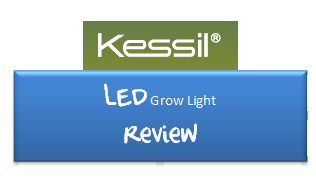
Kessil makes a very unique type of LED grow light. Their lights are so different from the other players in the industry that I originally classified them as second or third-tier lights that would only work on small herbs. After reading a few successful grow journals where people used Kessils (H150, H150w, or H350 lights) to grow major plants like tomatoes and medical cannabis, I decided it was worth checking these lights out.
Before, we get too far into the review of the individual Kessil lights, I think it’s a good idea to learn a little bit more about this company. I contacted the company to learn more about them and this is what they told me:
This is from David Lowry (a sales manager at Kessil who was nice enough to talk with me).
Most people know that Kessil was founded in 2009, but they don’t always know that Kessil is a business division of DiCon Fiberoptics, Inc., a technology company that has been around since 1986. We originally started our LED research in 2001 and developed our 21chip platform in 2005. Our first market was in high end architectural fiber optic lighting and our FL2100 was launched in 2006/2007. An example of this lighting is on the New York, New York building in Las Vegas.
One of the unique aspects to us is that we are one of the few technology companies that designs, engineers, and manufactures its own products. We start from our high brightness LED chips themselves produced right here in our Richmond, CA facility all the way down to final assembly at our manufacturing facility. We have our own in house experts and PHDs in Mechanical, Thermal, Optical, and Electrical engineering as well as a few plant biologists. We have a dedicated lab for experimenting and testing our lights on a variety of crop types and rely on local growers for feedback and testing of products/spectrums to ensure that what we produce in the lab can be reproduced in a real life situation. With 25 years of reputation on the line, we focus on markets that truly benefit from what we have to offer.
Our main LED technology platform is the Dense Matrix array which is currently available in the 21chip H150 or the 50 chip H350. Our Dense Matrix LED arrays provide superior penetration and color mixing in a very small package. This modularity makes them versatile enough to use as a primary light, or supplemental in almost any situation. Spectrum is also very critical in the design of our arrays. Not only what wavelengths used, but at what ratios. We provide spectrums that are specific for certain stages of growth, general purpose, or boosters that can be used to enhance or tune the spectrum of a grow area. LEDs provide the ability to customize the light to use light like we do nutrients. You can have your basic 2 or 3 part and keep it simple, or you can really get into the spectrum tuning like you would with additives or supplements.
Many of these things are what got the attention of the industries oldest and largest distributor in the hydroponics industry, Hydrofarm. Hydrofarm had tried and tested many LED units only to be disappointed like many consumers. In fact, in our first meeting we were met with incredible skepticism by many of the sales reps who had heard so many negative accounts about LEDs from end users and store owners. Even after being able to answer all of their questions it took the overwhelming feedback of their customers and real life results to convince some of the reps that Kessil is the only LED for them. After nearly a year and a half we are still exclusively distributed by Hydrofarm in the US.
A few takeaways from this conversation:
- This is a big company that has a large budget for research. They have been researching LEDs for about a decade now.
- They have an amazing staff (PHDs in Mechanical, Thermal, and Electrical Engineering. They’ve also got “a few” plant biologists.) I love how he casually tosses around the words “a few plant biologists.” Some LED companies don’t even have one plant biologist on the staff. Needless to say, this company has all the expertise and funding it needs to actually succeed in creating an LED grow light that will work.
- They convinced Hydrofarm to distribute their lights, no small feat.
H150, H150w, and H350 LED Grow Light Review
Now that we know more about the company that makes these lights, let’s get into the actual review. They have three lines of lights that are all very similar: the H150, the H150w, and the H350 Spectral Halo. I’ll review the lights and explain any differences below.
First you need to understand how these grow lights are designed. They are extremely different from any other grow light out there. Here’s a video that explains their design.
H150 Review
Now that you understand the basic design of these lights, let’s get into the actual review.
Warranty: A-
All Kessil lights have two-year warranties. Originally they had one-year warranties, but as of April 1, 2011, they have jumped up to two-year warranties (a good sign that they are confident in the lifespan of their lights). They get an A- instead of a solid A because some companies in the industry are actually offering three-year warranties.
Trial Period: B+
I couldn’t find any information about trial periods from Kessil. I’m following up to see if they have one. However, I’m not too concerned because (1) this is a big company that has a name brand to live up to and (2) Hydrofarm distributes their lights (meaning that you can head to a local gardening shop that carries Hydrofarm’s products and ask them about the trial period for the lights). Use this form to find a shop nearby you that distributes Hydrofarm’s products: http://www.hydrofarm.com/wheretobuy.php Make sure to call the shop in advance to see if they are carrying Kessil LED grow lights (hate to see you make the trip out there for nothing).
Heat Sink: A+
These guys take their heat sinks seriously. Because of their dense-matrix design (which places 21 LED chips in a dime-sized area) they have had to pay special attention to heat dissipation. LED chips don’t radiate heat like HID lights, but heat can build up on the chips themselves. This heat on the chips needs to be dissipated quickly so the light will last longer. Kessil has considered all of this and they have an amazing heat sink in place. The heat sink on the H350 (talked about later in the article) is even more intriguing.
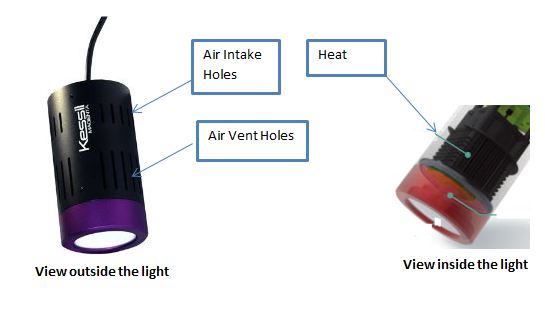
Spectral Wave-Length: A-
Kessil has a pretty interesting approach to spectral wavelength. They actually have four different types of H150s. The types are classified according to their wavelengths: Purple, Magenta, Red, and Blue.

The purple is an all-purpose light that will grow a plant from start to finish. The magenta is similar to the purple, but with a heavier emphasis on flowering (a higher red to blue ratio). The Red H150 is meant to be a supplemental light that will increase the amount of yield during the flowering phase. The Blue H150 is also meant to be a supplemental light. Its job is to help the plant during the vegetation stage.
I like that Kessil is covering all of its bases. I gave them an A- instead of a solid A because I worry that they are putting too much emphasis on supplemental lighting when what many of us really want to see is a light that can dominate in all phases of growth. Maybe that’s unfair though considering most growers use one light for vegging and another for flowering.
Actual Watts Drawn: B-
This is the area of the Kessil lights that has me the most concerned. The H150 only draws around 40 watts of power. I still haven’t been able to wrap my mind around how a 40 watt LED is going to be able to grow my plant from start to finish. All of the other LED grow light companies have been drastically increasing the amount of watts their lights draw, but Kessil seems content and I’m not sure why. For a comparison, the latest round of lights from Advanced LED draws on the lower end 100 watts and on the upper end 700 watts! Most of the industry is hovering around 200 watts (actual draw) for their lights that grow from start to finish. Does Kessil know something that the rest of the companies don’t?
I’m not sure of that answer and I think only time will tell. Perhaps part of the equation is that these lights have the dense matrix platform that jams so many lights into such a small area. I’m not counting these lights out, but I definitely want to see more successful grows with them from start to finish. I also want to hear an explanation from the company on how they expect to compete with such a low watt draw. I’ve contacted them about it, but still haven’t heard back. I’ll keep you posted.
Beam Angle: N/A
I honestly don’t think beam angle matters in the Kessil lights. Normally beam angle is a big deal because you have individual diodes pointing a certain direction. You want to make sure the beam angle is relatively narrow so you have a more concentrated light source. However, the way Kessil packs all of their diodes into a small area makes beam angles irrelevant (or at least less important). I don’t think light concentration is a problem with the Kessil lights.
Conclusion on the H150 Standard Edition
This is a great light that is going to last a long time and save you lots of money on heating and electricity. However, don’t expect miracles out of this 40 watt light. It will work excellently as a supplemental light, but right now I can’t recommend it as a light that will grow tall, flowering plants from start to finish. You’d probably need four H150s for that.
H150W Review
Switching gears hear to the newer H150w light. There isn’t much of a difference between the normal H150 and the H150w. The only difference is that the H150w spreads light over a wider area than the H150. This is good if you have multiple short plants, but it can actually work against you if you are growing a taller plant. I already have concerns about the amount of power this light is putting out and spreading out the light even more is doing nothing to waylay my concerns. In other words, I’d recommend the normal H150 in most cases. The exception would be if you’re growing extremely short plants that don’t flower.
H350 Review
The H350 was just recently released and it looks very promising to say the least. Here’s a video that talks about some of the differences between the H150 and the H350. After you watch the video I’ll give you some of my thoughts.
First off, I’m glad that they upped the power. The 36 watt draw from the H150 was a bit weak in my opinion. The H350 draws 90 watts. My first impression is that still just isn’t enough. However, my opinion on that is starting to change. I’m starting to find more and more successful grows with this light and some of them are being done on plants like medical marijuana that require a lot of light intensity. At the bottom of this post, I’ll try to link to a few of these.
The second thing worth mentioning is the new heat sink design. The vapor cooling system is genius and something that could probably only be pulled off by a large company (DiCon). I’m very happy to see Kessil taking the heat dissipation issue seriously. Their vapor cooling system may just be the standard in the future.
The last thing I’ll mention about the H350 Spectral Halo is that it has a different purple wave-length model than the H150 purple model (the magenta models are the same). The H350 version is called deep purple and it has more emphasis on blue wave-lengths.
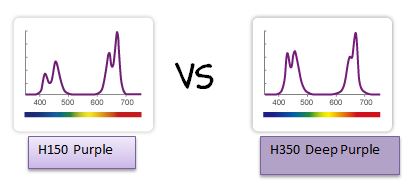
This is a good thing if you want more vegetative power. This also means that you’ll probably want to go with the magenta or an HPS light for flowering larger plants.
Recommendation on the H350
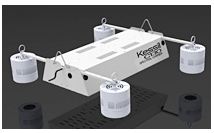
Cool Light Carrier
Let’s be honest, most people who are buying LED grow lights are doing so for medical cannabis or other flowering plants. This means you need a light that packs a punch. If I were going to buy from Kessil, then I would definitely go with their H350’s. I think this is their best light by far. I’d also consider buying their C130 Spectral Carrier. Just seems like a fun tool to have in the arsenal.
Overall Conclusion on Kessil Lights
Kessil is putting out some really great lights. One thing that has me really excited is the fact that DiCon (a wealthy fiber optics company) is putting millions of dollars into research and development for these LED grow lights. If Kessil can continue innovating at a fast pace, they may soon be the leader in the industry. The main advantage Kessil has over the competitors is infrastructure.
Would you rather your lights were made here?
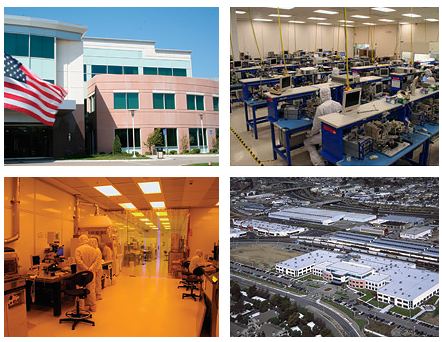
Kessil Headquarters (DiCon)
Or Here?
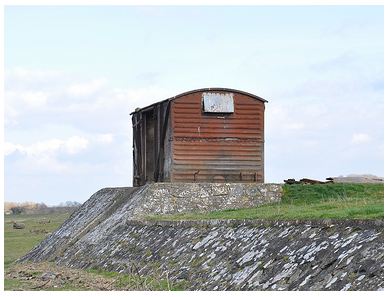
Crazy Joe’s LED Shop! We heart LEDs.
Photo Courtesy of DaveOnFlickr
To sum it all up; I like the Kessil lights (although I wish they packed more of a punch). The resources Kessil has available in terms of research dollars, employees, and buildings are the best I’ve seen from an LED grow light company. Keep an eye on them because I think they’ll be a player.
Grow Journals with Kessil Lights
Here’s a YouTube Video where the guy is obviously talking about cannabis (look at the background and you’ll see what I’m talking about. Anyways, the guy thinks that four H350’s compete with a 1,000 watt HID. Not bad for 360 (90X4) watts of LED power.
Note: I’ve seen some other grow journals with Kessils being used, but I only like to post journals that are well taken care of. If you know of a good journal, then let me know and I’ll get it posted here.






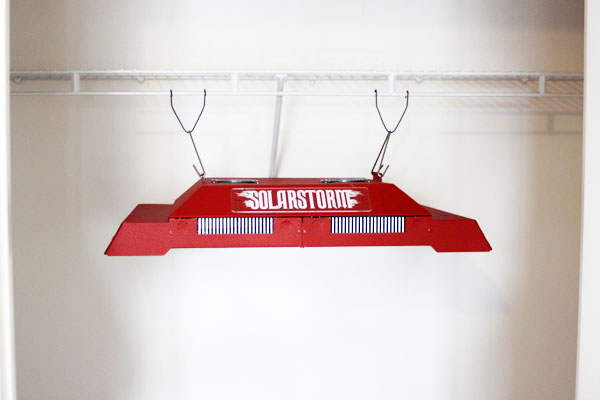
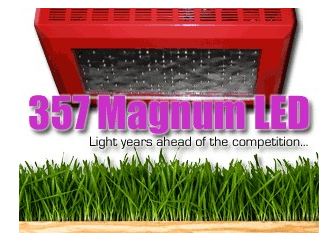
Seems that anyone who is nice to you on the phone can count on a great review.
A common theme to anyone who has had success growing weed with Kessils lamps is… They had another type of grow light in the room!!!!! If you needed to do an honest review on any lamp, it would be this one.
Please help growers by warning them of such products. False reviews that are tainted or biased will only serve discredit you. To do this type of site, you must be willing to hurt a few retailer’s feelings now and then.
Dishonest reviews will get you a few free grow lights, but you will be the only one reading the reviews. I know you can do better then this.
Lots of pretty good LEDs to choose from, but not all LEDs are good.
Not fooled.
Hey Ozzy,
Thanks for your feedback, duly noted. It is true that if they actually agree to a review that they they will get a higher score on customer service. Many of the LED companies I have come in contact with don’t reply to my phone calls or my emails. If they don’t answer my phone calls as a potential customer, then I can conclude that they are treating other people similarly.
I’m sorry if it didn’t come through clearly in my review of Kessil that I thought their lights were under-powered. I did give them a B- grade in actual watts drawn. That is the worst grade I have given to any LED grow light in that category. I mentioned that I was “most concerned” about the lack of power and that other LED lights in the industry were drawing much more power.
Still, I have to agree with you that I need to come down harder on some of these manufacturers. The ones that refuse to answer phone calls and emails are obviously the ones that will be hammered the most on their customer service score. I try to be as fair as I can when reviewing the technical aspects of the light.
I would sincerely appreciate it if somewhere on my site you left your recommendation of some LED grow lights.
Best,
Nate
The 350 model looks very interesting, but I must admit that I’m on the fence about the high price. I noticed that you didn’t rate them on price, but Hydrofarm has them for 439 for the 350 model. My Question is that 430 for 1 of those little modular units and how much floor space does cover. It looks really but so does a solid gold flash light.
Hey JJ,
The Kessil coverage areas are a little different than the standard LED grow light coverage area because of their unique design. Most grow lights give their coverage in square footage, but Kessil actually gives theirs in “circular footage.” The H 350 will cover a two foot diameter. This isn’t a ton of space you are right. Basically put your foot down and then with the ball of your foot held in place move your foot around in a complete circle and you have what the light will cover. This is under the assumption that your foot is about 12 inches long.
Kessil is doing a give away right now (end of 2011) so you might want to check that out. Maybe you can get a free one!
All,
I recently purchased the Kessil h350 MAGENTA model. I am using it as the main light source for my garden, and thus far I have been VERY SATISFIED with it. My garden looks healthier than ever. I have noticed since i have been using it I have seen tighter nodal spacing and larger foliage. The light really does penetrate deep into the foliage.
My space is within a 2′ diameter area, but I have full confidence that this light would still support 3′ diameter area, although you would may want a shorter garden under these conditions. these dimensions are approximately the equivalent coverage area of a 250W HID
The noise level on these units are a fraction of the noise produced by and HID set up. It is a quiet high wavelength sounds produced by the heat sink, and seems easily muffled if needed. A friend of mine has a 250W HPS setup, and my Kessil is fraction of the noise when you account for the exhaust fans typically needed for and HPS system.
These lights are supposed to have a life expectancy of up to 50,000 hrs. I have only had mine for about a month, so I will have to wait to see.
I bought my Kessil for just under $350
However,
I got it $70 cheaper than msrp
It runs at approximately 90W, but produces equal light to a 250W HPS (Magnetic ballast systems actually pull 375W)
It produces minimal heat, so no need for A/C or additional cooling (less energy usage)
and its the size of two stacked 12oz tuna cans,
while doing the job of 22″ by 10″ by 7″ reflector hood, exhaust fan and ducts, and lamp you have to replace every 2000 hours.
All in All, This light can definitely hang with HID’s, but its FAR more efficient. you’ll save your investment on the light in energy usage and equipment you don’t need to buy or run in no time
I HIGHLY suggest this light to ANYONE growing a small scale garden!
And if you want a larger scale garden just add another Kessil to suit your area needs!
Beans13
Hey Beans,
Thanks a ton for stopping by and for leaving your comment. I’m really interested to hear how your grow ends up. Most of the growers I’ve talked with are using Kessils as supplemental lights instead of their main lights. Their size makes them a great supplemental light.
I’m very interested in hearing how your grow ends up during the flowering stage and for total yield. Please come back and let us know how it went. I’m guessing that you might have a slightly lower yield than normal simply because this is your first grow with the light and you might have to adjust a few things.
Best,
Nate
Nate do you know about noise levels with the Kessil units? I’m thinking not much.
If the H 350 covers a 2 foot diameter circle circle that would work for me.
I bought 3 purps as supplemental lighting, I grow herbs, flowers and succulents, also some fruits and veggies. they penatrate much better than my homemade 7 watt lights, they actually penatrate just well as my hid 400 watt. i paid 325 on ebay for 2 mo. old kessils, x3. they are nice looking and when put my finger in front 2 inches from light, it actually penatrates my skin. I can see my blood flowing no lie. just like putting a lazer red beam on your finger. these are nice lights, im.in no way affiliated with kessil, lights are quiet and grow flowering plants…..FLOWERINGZ! AMAZING LED.
Jason,
Thanks for sharing your experience. It helps others who are trying to make up their mind.
I Just bought 2 Kessil magenta H350. I started some seeds using only the Kessil lights. Its been about two weeks and these plants are growing very fast. I have gone totally organic and use only basic formulas with guano and some trace minerals.
I have grown since grow supplies were very basic, you know like horse apples etc.
So I am very excited and will try to keep you updated, maybe a pic or two. cheers, saj
Hey Saj,
Thanks for the information. I’d absolutely love it if you kept us posted on how the lights are working for you. Maybe I need to set up a forum here for people to post their LED grows?
Best,
Nate
hi,
i’ve been really interested in these LEDs that have a hell of a time trying to get a hold of them (in australia). spoke to kessil directly, after some promising emails and even an hour on the phone to them, they haven’t responded to emails. How hard is it to quote for shipping? I’ll look into other LED brands for sure, like they say word of mouth….
Hey John,
I just spoke with a company in Australia that makes these lights. Let me see if I can dig up their information and I’ll email you the company name.
You’ll also want to consider volt outlet differences. Products in the US usually come in 120 v instead of 240v like in Australia. If you check out the HydroGrowLED lights they come with both a 120v and a 240v plugin.
I also just got a VIPAR LED light from England today. The light looks really promising, but I don’t think they will have any problem shipping to you in Australia. It’s a more international company.
For the record sometimes Kessil doesn’t respond to my emails either! Frustrating.
Best,
Nate
Hey Nate,
Thanks for the info. What I found about the kessil is that it has a power brick similar to that off a laptop so it’ll be simple as getting a Aussie power cord when I get it. Love your work. Also I’ll give you some feedback on the hydro grow led as well.
Hi Nate,
you have heard that from almost everyone posting on your site, and I won’t be an exception … any way, to make the long story short: You are doing outstanding job here 😉
Can you share some further information about the VIPAR LED ? I am looking for a reliable European LED Light company but with no luck yet. Don’t you think VIPAR products look similar to those from AdvnaceLedLight ?
Hey Monter,
That’s a great observation about the VIPAR looking like some of the AdvancedLED lights. It doesn’t look anything like Advanced’s new Diamond series, but it does look a bit like their last series.
I’ve got a Vipar light and it’s a high quality light. I’m currently in the process of learning more about the company. As with most LED companies they are manufacturing in China. This isn’t a bad thing, but it’s worth keeping in mind. I only know of two companies that don’t manufacture in China right now (California Lightworks and Kessil).
So far the people at Vipar have been very professional with me. They answer all my emails and inquiries right away. They also don’t kill you with false marketing. They market very appropriate and fair coverage areas.
I would also check out Lumigrow. I’ve yet to try out one of their lights (hoping to in the very near future). From talking with other experts in the area they produce a good light and though they are US based, they deal internationally.
I need to do some more research in the European market.
Duly noted,
Nate
Nate – I ordered a 150W Purple from Kessil and I wanted to comment about your review since you mis-lead people into believing their lights are produced at this elaborate Di-Con facility in California. This is not true – these products are manufactured in Taiwan in one of those little shacks like you pictured. I also bought a 50W UFO from Blackstar and a 21X-PRO from Hydro Grow, and the Kessil simply doesn’t stack up. To everyone else out there, save your money. This is just another cheap Taiwan-made product that operates WAY HOTTER than the other 2 lights I bought (less lifespan), covers a smaller area, and does the worst in terms of growth…
Hey Donnie,
Thanks for your comments on your experience with the Kessil light.
With my discussions with Kessil I was led to believe that their lights were manufactured in the USA. I’ll have to do some further investigation to clarify (though they can be hard to get a hold of as I’ve mentioned before). Kessil is still unique in that they design, engineer, and manufacture their own products. They probably have a plant in Taiwan for manufacturing.
I still stand by the fact that Kessil is a division of Di-con optics which means they have a lot more resources than most LED grow light manufacturers.
That being said, I agree with you that the 21x-pro is a better light. If you’ll read my recommendations, you’ll see that Kessil is not found in my top choices.
Thanks for coming by the site and I value your feedback,
Nate
Hello Net, thanks for your fast and comprehensive answer. Actually I wish I could use one of the Lumigrow lights. Unfortunetaly size of my growing area is just about 2ft x 1ft and such a powerfull light would definitely be overkill. So having above in mind I focus my attention on smaller units avaliable on the market. In fact I hesitate between 21x-pro, (apparently they have some delay in releasing the new model on the market) kessil H350 (though I have gather some serious doubts after Dannie’s review) and VIPAR A100. One for sure is that VIPAR has a really nice customer service. As you have mentioned ealier they answer all the question right away.
FWIW Kessil makes LEDs at fab in California then lights are assembled by DiCon in Taiwan.